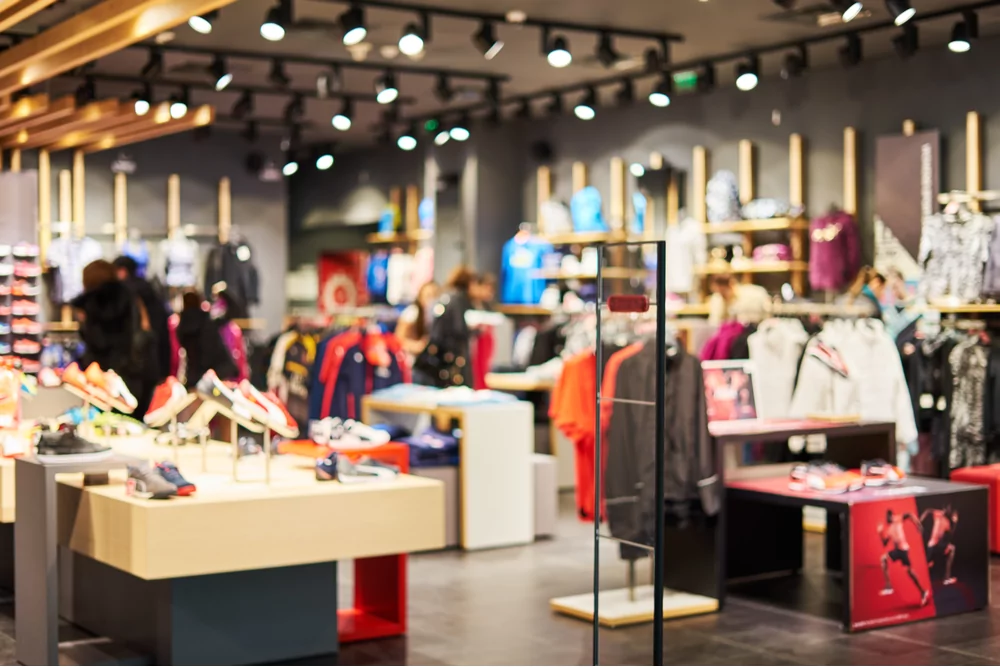
Retail Reduced – December 2023

By Nathan Peacey, Melissa Story, Hannah McIntosh
2 Jan 2024 | 1 minute read
In this month's review of trends in the Retail and Consumer sector we look at:
- The unexpected Christmas hangover
- The dawn of AI regulations
- Avoiding Innovation Debt
- Loyalty schemes to reign supreme?
Trends in the Retail sector in December 2023
There has been a significant rise in BNPL activities in recent years, with services such as Klarna and Clearlypay now readily available with thousands of online retailers. The latest Financial Lives survey showed that 27% of UK adults or about 14 million people, have used BNPL at least once in the six months to January 2023, up from 17% in the 12 months to May 2022.
According to analysts, customers were predicted to spend nearly £4bn using BNPL lenders over the 2023 Christmas period, making it 8.8% above 2022. Subsequently, shoppers are set to owe billions in the new year after using the schemes to fund the festivities.
A study from Barclays found that while BNPL services are more accessible than credit cards, two in five users are unclear on the terms and conditions, and do not fully understand the consequences of missed repayments. A recent Citizen’s Advice survey found:
- More than one in four UK adults (28% – the equivalent of 15.1 million people) say they’re likely to use BNPL to help with festive spending. This rises to 56% of parents with primary school-aged children.
- One in five (21%) BNPL users said they had missed or made a late payment in the past 12 months, with 10% of that group going on to be visited by an enforcement agency or bailiff as a result.
- Almost a third (29%) of BNPL users who were due to make a payment in the last month borrowed money to repay their instalments, meaning their initial debt is only leading to more debt.
Helen Ganney, from the debt charity Christians Against Poverty, said: “Buy now, pay later can seem an attractive way to afford all the things we’d like to buy at Christmas – but the ‘later’ part comes around quickly and will need to be paid back. It is worrying that these products are not currently regulated by the Financial Conduct Authority, as other lenders are.”
Following the Woolard Review in 2021 and subsequent FCA consultation in 2022, ministers were pressured to regulate the sector and draft legislation was published in February 2023. Sheldon Mills, Executive Director of Consumers and Competition at the FCA said: “When used appropriately, the product provides valuable benefits, but we want to ensure that consumers, particularly those in vulnerable circumstances, have adequate protections and are given sufficient information”.
On 8 December 2023, after days of intense negotiations, the European Parliament and EU member states reached an agreement on landmark EU rules governing the use of artificial intelligence.
Theirry Breton, the European Commissioner for Internal Market, described the agreement as “historic”. He goes on to say “The EU becomes the very first continent to set clear rules for the use of AI. The AI Act is much more than a rulebook — it’s a launchpad for EU start-ups and researchers to lead the global AI race”.
EU companies, that are developing or using AI tools, will need to comply with the obligations and requirements set out in the AI Act, such as ensuring data quality, transparency, human oversight, accuracy, robustness, and security of their AI systems. At its core, the AI Act will adopt a risk-based tier system classifying AI systems into four risk categories depending on their use cases. Regulatory Framework defines these as:
Unacceptable risk
All AI systems considered a clear threat to the safety, livelihoods and rights of people will be banned, from social scoring by governments to toys using voice assistance that encourages dangerous behaviour.
High risk
These include applications related to transport, education, employment, and welfare, among others. Before putting a high-risk AI system on the market or in service in the EU, companies must conduct a prior “conformity assessment” and meet a long list of requirements to ensure the system is safe.
Limited risk
Limited risk refers to AI systems with specific transparency obligations. When using AI systems such as chatbots, users should be aware that they are interacting with a machine so they can make an informed decision to continue or step back.
Minimal/no-risk.
This includes applications such as AI-enabled video games or spam filters. The vast majority of AI systems currently used in the EU fall into this category.
As the EU introduces these new measures to regulate the emerging technology, the UK has said it will refrain from regulating its AI sector at this present moment. Viscount Jonathan Camrose, the UK’s first minister for AI and intellectual property, confirmed at a press conference on 16 November 2023 that there would be no UK law on AI “in the short term” because the government was concerned that heavy-handed regulation could curb industry growth. “I would never criticise any other nation’s act on this,” said Camrose. “But there is always a risk of premature regulation.” In rushing to introduce industry controls, “you are not actually making anybody as safe as it sounds”, he said. “You are stifling innovation, and innovation is a very very important part of the AI equation”.
As we enter a new year, warnings of a pending recession persist. Reduced disposable income, increasing costs and interest rates at a 15-year high of 5.25% all forecast further economic stagnation in 2024.
What is Innovation Debt?
During such economic downturns, some businesses hesitate to invest in innovation, opting instead to cut costs and rely on past, strategy and marketing success. Innovation debt arises when a company neglects to keep pace with an evolving market.
Nevertheless, this assumes the bottom line that customers will always shop, which is not necessarily true. The cost-of-living crisis and high inflation have caused many customers to reduce discretionary spending and with markets getting increasingly crowded and competitive, retailer mustn’t fall behind.
Success Story: M&S
One business that has transformed its fortunes by adopting a risk-hungry, innovative strategy is M&S. In September 2019, the British retailer dropped out of the FTSE 100 for the first time since its 1984 inception. Annual profits slumped to less than £100 million and share prices were close to a 20-year low.
But M&S’s revenue in the first half of 2023 came in at £6.13bn, a healthy 11% above the same period in 2022. Net income also grew by 25% to £208m. Several factors are at the root of its recent transformation:
- A reshaped store network offering market style Foodhalls, cafés, and interactive coffee and wine tasting machines.
- A re-definition of their reputation as a fashion retailer; shaking the ‘frumpy’ image and offering good quality clothes appealing to all generations.
- An investment in new food products, Bigger Pack Better Value options and Dine-In deals to emphasise their value-for-money.
The Role of Social Media
Another area that is helping brands stand out is leveraging social media. Traditional methods of marketing are rapidly being overshadowed by platforms like Instagram and TikTok where brands can reap the rewards if they stay attuned to trends and the shopping habits of Gen Z, in particular. You only need to look at the interaction with ScrubDaddy, Duolingo and Ryanair’s recent social media posts to get evidence of this.
M&S have innovated to reach younger audiences by jumping on viral sounds, producing ‘outfit-inspo’ videos, getting well-known celebrities and influencers to test out their food, and by putting iconic characters ‘Percy Pig’ and ‘Colin the Caterpillar’ at the front and centre of their advertisement campaigns. This has been successful to the extent of a Percy Pig themed clothing line for adults, children, and … pets.
Avoiding Innovation Debt
One fashion retailer explained that “If you’re just chasing numbers every month or quarter, you’re just surviving – you’re not innovating or moving forward.” The key is for retailers to not only expand their digital offerings and explore diverse marketing channels but also to consider how they can make their in-store experiences stand out from the crowd. A fear of failure prevents the cultivation of new audiences and prevents complacency from stifling innovation.
It’s not a simple proposition; to maintain undisrupted daily business whilst investing in modernisation. But even in the face of economic uncertainty, a lack of innovation can kill your business.
Loyalty schemes have been a longstanding tool for retailers; offering tangible rewards such as discounts, offers and cashback to both attract new customers and acknowledge the loyalty of existing ones.
The benefits of loyalty schemes are manifold:
Enhanced customer experience
Customers are provided personalised incentives that express brand appreciation for their loyalty, fostering a stronger relationship between the consumer and retailer.
Tailored marketing strategy
Loyalty schemes enhance the efficiency of marketing efforts by enabling retailers to identify and target specific audiences and consumers. This yields a significant return on investment, as marketing is relevant and precise.
Zero-party data
With privacy landscapes changing and the gradual demise of third-party cookies, loyalty schemes provide retailers with an accurate method to capture customer’s preferences, engagement patterns, and demographics. This willingly shared data allows businesses to adopt hyper-personalised marketing strategies.
Yet, the loyalty landscape is becoming more crowded as many retailers seek ways they can increase customer engagement and stand out amongst the crowds. Various types of schemes are emerging to boost brand engagement:
Partner retail loyalty schemes
Collaborative efforts between brands offering dual discounts and co-promotion campaigns create additional incentives for the customer. However, retailers must be careful to identify strategic partners which they are not in direct competition with.
Subscription-based loyalty schemes
By making customers pay an upfront membership fee, they then grant access to free delivery, discounts and special offers. This can then be supplemented with other loyalty scheme strategies. Amazon Prime, the most popular subscription-based loyalty scheme has partnered with Odeon to offer its members discounted cinema tickets. Customers can save up to 45% on the price of an Odeon ticket once a month.
Referral-based loyalty schemes
This type of scheme can be beneficial for businesses with infrequent customer transactions. A customer purchases a product, refers others to the product if they are satisfied with it, and in return, receives tangible rewards for their recruitment. These rewards may also operate on a milestone basis so that sustained efforts to draw more customers to the brand, the progressively better rewards are unlocked, and in the long-term, the customer base expands.
Points-based loyalty schemes
These widely used schemes allow loyal customers to accumulate points with each purchase. These points unlock rewards and discounts thus encouraging higher spending and further points accumulation across various services. For example, Sainsbury’s Nectar Points can be collected on groceries, Petrol, and even third-party purchases under Argos.
Tiered loyalty schemes
Common in the retail sector, tiered rewards provide the most loyal customers, who purchase the most products and engage the most with the brand, with exclusive access to superior offers. The catch being that customers need to continue spending to maintain their particular tier of customer privileges.
Customer Concerns
As retailers embrace new ways to enhance their loyalty schemes and grow their customer base, there are growing concerns about how companies handle, use and sell sensitive customer information.
When an individual signs up to a loyalty scheme, they input critical demographic information such as their name, age, email, email address and phone number. Loyalty scheme apps can track user activity in-store and online and identifies shopping patterns, enabling businesses to predict future customer behaviour. Other loyalty schemes include voluntary customer surveys to gather additional feedback and learn more about customer preferences.
This data can then be sold on to third parties; Australian economist Rod Sims noted that “selling insights and access to loyalty scheme members are becoming increasing sources of revenue” for retailers.
Understandably, customers are concerned about what happens to their data but Geoff Lloyd, director of retail at IT consultancy NTT DATA UK&I explains “The UK version of GDPR [General Data Protection Regulation] demands that loyalty card providers are transparent about their algorithms’ use of customer data… When you sign up for a loyalty scheme, the terms and conditions should outline what the retailer will do with the information and how it will protect your privacy. If a programme “collects ‘special categories’ such as [details of] ethnicity or health” the retailer will have to get your explicit consent to use it.”
In this evolving landscape, zero-party data collection allows businesses to make data-driven decisions, offering the potential for more relevant products and improved customer experience. The trade-off between these advantages and data sharing prompts the question: Maybe sharing data is worth it?












